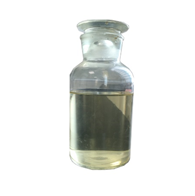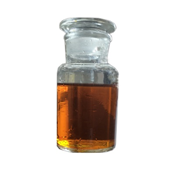ERUI:EFFICIENT SUPPLY CHAIN
ERUI:EFFICIENT SUPPLY CHAIN
1. Introduction
Because some solids are difficult to dissolve in water, when one or more of these solids exist in a large amount in the aqueous solution, under the agitation of hydraulic or external power, these solids can exist in the water in an emulsified state to form an emulsion. Oil-water mixtures and water-oil mixtures will form a relatively stable water-in-oil or oil-in-water structure in these two phases. The theoretical basis is "electric double layer structure". In this case, add some medicament to destroy the stable electric double layer structure and stabilize the emulsified system, so as to achieve the purpose of two-phase separation. This kind of technology is called crude oil demulsification technology, and these agents for destroying emulsification are called demulsifiers.
2. Necessity
2.1 The large amount of water contained in crude oil will increase the load on oil pipelines and equipment and increase investment costs.
2.2 This moisture can also cause corrosion of oil pipelines, scale on the pipe walls and block oil pipelines.
2.3 When moisture enters the refinery, it will poison the catalyst and cause economic losses.
2.4 The water content of the crude oil greatly increases the viscosity of the emulsion, which forces the system to increase its driving force and increase the transportation temperature, resulting in increased energy consumption for gathering and transportation.
3. Classification
According to the current use of demulsifiers, demulsifiers can be divided into two categories: water-soluble demulsifiers and oil-soluble demulsifiers.
Demulsifiers belong to the type of surfactants. The demulsifier molecule is composed of lipophilic and hydrophilic groups. Lipophilic is composed of long-chain hydrocarbon groups, and hydrophilic is composed of ionic or non-ionic hydrophilic groups. There are many types of demulsifiers. According to the classification method of surfactants, they can be divided into: cationic, anionic, nonionic, and two-type ionic demulsifiers.
The hydrophilic group generated by the anionic demulsifier dissolved in water is a negatively charged ion group, which is divided into carboxylic acid, sulfonic acid, sulfate ester and phosphate ester according to its hydrophilic group. Anionic demulsifiers include carboxylates, sulfonates and polyoxyethylene fatty sulfate ester salts, etc., which have the disadvantages of large dosage, poor effect, and easy to be affected by electrolytes and reduce efficiency.
The hydrophilic group formed by the cationic demulsifier dissolved in water is a positively charged particle group. The hydrophilic group is mainly a basic nitrogen atom, but also phosphorus, sulfur, iodine, etc. Cationic demulsifiers mainly include quaternary ammonium salts, which have obvious effects on general crude oil, but are not suitable for heavy oil and aging oil.
Non-ionic demulsifiers do not dissociate ions after being dissolved in water, so they have no charge. Non-ionic types mainly include block polyethers with amines as initiators, block polyethers with alcohols as initiators, alkyl phenolic resin block polyethers, phenolic aldehyde resin block polyethers, containing Silicone demulsifier, ultra-high molecular weight demulsifier, polyphosphate ester, modified product of block polyether, and zwitterionic demulsifier represented by imidazoline crude oil demulsifier.
The two types of demulsifiers can generate positive and negative ions after being dissolved in water. It is cationic in acidic solutions and anionic in alkaline solutions.
3-1. ERPR-1 Demulsifier
This class is a polyether non-ionic demulsifier product, mainly based on higher alcohols, propylene glycol, glycerol, pentaerythritol, polyvinyl polyamines and various resins and other initiators containing different functional groups and propylene oxide, epoxy High molecular polyether compounds of different molecular weights obtained by ethane block polymerization, and cross-linked products prepared by reacting selected high molecular polyether monomers with different crosslinking agents, and specific high molecular polyethers It is a high molecular weight compound prepared by self-polymerization after esterification of similar monomers and unsaturated substances, which is suitable for demulsification and dehydration of different types of crude oil.
Main Specifications
Exterior: Homogeneous liquid, no impurities
Dusolid Content%: According to customer requirements
PH(1% Aqueous Solution): 5.0-7.0
Closed Flash Point℃: According to customer requirements
Freezing Point℃: According to customer requirements

3-2. ERPR-2 Demulsifier (Reverse Phase)
This product is mainly suitable for the deoiling treatment of produced water from oilfields, the treatment of high water content crude oil to de-free water and oily sewage, and the treatment of oil refineries or other oily sewage. It is especially suitable for the treatment of high water content heavy oil sewage, which can quickly break the sewage The oil-in-water emulsion makes the crude oil coagulate and float quickly, achieving the purpose of degreasing and clear water. It can be used in combination with conventional demulsifiers to achieve the effect of dehydration and degreasing; it can eliminate the emulsified layer phenomenon produced in the crude oil dehydration process and inhibit its recurrence; it can be used alone in the treatment of oily sewage in oil fields, refineries or other oily sewage.
Main Specifications
Exterior: Homogeneous liquid, no impurities
Dusolid Content%: According to customer requirements
PH(1% Aqueous Solution): 5.0-7.0
Closed Flash Point℃: According to customer requirements
Freezing Point℃: According to customer requirements

This product is widely used in Shengli Oil Production Plant, Shengli Offshore Oil Production Plant, CNOOC, Daqing Oilfield and other units. The on-site effect is good. The oil content of sewage is significantly reduced. After continuous injection of 40mg/L of this product, the oil content of the exported sewage drops below 10mg/L . In 2016, in view of the unsatisfactory effect of the demulsifier in a station of Daqing Oilfield, we carried out the field test of the demulsifier of our company and achieved good results.
4. Service Process
Crude oil demulsification technology mainly uses demulsifiers to solve the problem of oilfield demulsification, but there are thousands of different types of demulsifiers, which can be applied to different produced fluids individually or in combination. Generally, for different oil fields, different chemical properties of produced fluids, and different oil production methods, it is necessary to select different demulsifiers to achieve the best demulsification effect. This requires a professional chemical technology service company to conduct multiple rounds of laboratory tests and field tests to screen and determine the best demulsifier solution.
ERUI has a rich sample library of demulsifiers, and will give chemical technology service companies more options to design more effective formulas.
5. Contact Us
If you are interested in our products or technology, you can follow the process below:
1. Please provide as much detail as possible about the basic information of the oilfield that you currently need demulsifiers, including but not limited to the process of demulsification treatment, the technology used, the daily throughput, the complete analysis of the oil sample, water content, temperature, etc.
2. Email or social software communication, mainly to communicate and dock technical and business information.
3. ERUI provides samples and screening solutions upon request.
4. Confirm the needs and direction of cooperation, and sign a cooperation agreement.
5. Provide overall solutions, process design, products or on-site construction guidance services according to the contract.
6. Contact us.
Corrosion and Scale Inhibition Technology
Water Shutoff and Profile Control Technique
We demonstrate the working scene of oil and gas energy field, which help you quickly select the products you need.
